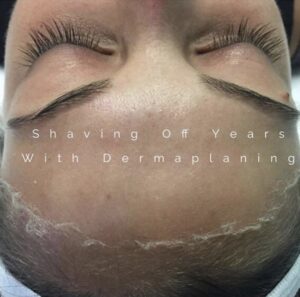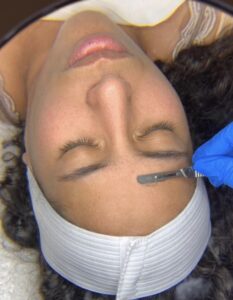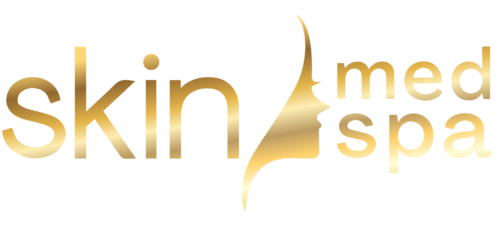Dermaplaning
What Is Dermaplaning?
Dermaplaning is a form of manual exfoliation similar in theory to Microdermabrasion but without the use of suction or abrasive crystals. A medical grade, sterile blade is stroked along the skin at an angle to gently “shave off” dead skin cells from the epidermis. Dermaplaning also temporarily removes the fine vellus hair of the face, leaving a very smooth surface.
Not only does dermaplaning even out the texture of your skin, it helps make the color appear smoother too. The process is beneficial for hyperpigmentation because it helps fend off the things in your body that inhibit production of melanin, which is what gives your skin its color.
How Does Dermaplaning Work?
As with any type of exfoliation, the removal of dead skin cells allows skin care products to be more effective, reduces the appearance of fine lines, evens skin tone and assists in reducing milia, closed and open comedones, and minor breakouts associated with congested pores.
Dermaplaning can be an effective exfoliation method for clients that have couperose (tiny blood vessels near the surface of the skin), sensitive skin or allergies that prevent the use of microdermabrasion or chemical peels.
What Areas Can Be Treated?
Dermaplaning can be preformed on the face and neck.
Benefits Of Dermaplaning
The benefits of dermaplaning include: increased absorption of topical products, immediately diminishes the appearance of fine lines and wrinkles, primes the skin for a chemical peel and creates a healthier, more radiant appearance.
How Many Sessions Are Recommended?
We recommend a series of six to eight sessions, up to four to six weeks apart.
Does It Hurt?
Dermaplaning is painless and is very similar to shaving any other part of your body.
Does The Hair Grow Back Thicker After Dermaplaning?
No, dermaplaning will not affect the thickness of your hair. Only a change in your hormones can alter your hair growth.
Before And After





